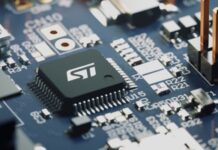Embedded systems, the cornerstone of modern technological advancements, are omnipresent yet often unnoticed in our daily lives. From smart home devices to automotive systems, medical devices to industrial machinery, embedded systems power a vast array of applications, enabling functionality, automation, and connectivity. The embedded system market has witnessed remarkable growth over the years, fueled by technological advancements, increasing demand for IoT devices, and the proliferation of smart technologies across various sectors.
Market Overview:
The embedded system market encompasses hardware and software components integrated into a larger system to perform specific functions. Key components include microcontrollers/microprocessors, sensors, memory, and connectivity modules. With the advent of Internet of Things (IoT), embedded systems have become integral in creating interconnected ecosystems, facilitating data exchange and automation across diverse domains.
Market Drivers:
- IoT Proliferation: The exponential growth of IoT applications across industries such as healthcare, automotive, and manufacturing is a significant driver for the embedded system market. IoT devices rely heavily on embedded systems for data processing, connectivity, and control, driving demand for advanced embedded solutions.
2. Advancements in Connectivity Technologies: The emergence of 5G technology promises ultra-fast, low-latency connectivity, opening up new possibilities for embedded systems in areas like autonomous vehicles, remote monitoring, and industrial automation. Additionally, advancements in wireless protocols such as Bluetooth Low Energy (BLE) and Wi-Fi 6 enhance connectivity options for embedded devices.
3. Rising Demand for Edge Computing: With the increasing volume of data generated by IoT devices, there’s a growing need for processing closer to the data source, known as edge computing. Embedded systems play a vital role in enabling edge computing by providing the necessary computing power and intelligence at the network edge.
4. Automotive Innovations: The automotive industry is undergoing a transformation with the integration of embedded systems in advanced driver-assistance systems (ADAS), infotainment systems, and autonomous vehicles. Embedded systems enhance safety, efficiency, and connectivity in modern vehicles, driving market growth.
Market Challenges:
- Security Concerns: As embedded systems become more interconnected and data-intensive, they become prime targets for cyber threats. Ensuring the security of embedded devices and data transmission poses significant challenges for manufacturers and developers.
2. Complexity and Integration: Designing and integrating embedded systems into larger applications require expertise in hardware, software, and system integration. Managing the complexity of embedded systems while meeting performance, power, and cost requirements is a key challenge for developers.
3. Lifecycle Management: Embedded systems often have long lifecycles, especially in industries like aerospace and defense. Ensuring long-term support, compatibility, and updates for embedded hardware and software throughout their lifecycle poses logistical and technological challenges.
Market Trends:
- AI and Machine Learning Integration: The integration of artificial intelligence (AI) and machine learning (ML) capabilities into embedded systems is a growing trend. AI-enabled embedded systems enhance decision-making, predictive maintenance, and autonomous functionality across various applications.
2. Rapid Prototyping and Development Tools: With the increasing demand for quick time-to-market, developers are turning to rapid prototyping tools and development platforms to accelerate embedded system design and validation. Platforms like Arduino, Raspberry Pi, and development kits from major semiconductor companies facilitate rapid prototyping and experimentation.
3. Open Source and Collaboration: Open-source hardware and software platforms are gaining popularity in the embedded system community. Collaborative development efforts, shared libraries, and open standards foster innovation and reduce development costs for embedded projects.
Market Outlook:
The embedded system market is poised for continued growth, driven by the proliferation of IoT, advancements in connectivity technologies, and increasing demand for smart and autonomous systems. However, addressing security concerns, managing complexity, and ensuring long-term support will be critical for sustaining growth and innovation in the embedded system ecosystem.













